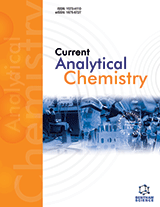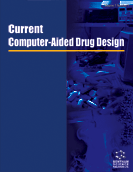摘要
在过去的几十年中,酶与解毒相关,并能帮助消除体内的外来化学物质,偶尔会产生高度活性代谢毒物这一观点已经非常清晰明了。为减少后期临床失败的概率或市场退出率,可能导致药物相互作用或毒性的关键代谢过程逐渐被重视。在活性代谢物的检测和了解结构活性关系取得了重大进展。现在人们普遍认为与某些官能团如苯胺类化合物、醌类、肼、呋喃、噻吩、acylpropionic酸、炔烃含有这些“结构性警报”的化合物比不包含的化合物形成活性代谢产物的风险更大。活性代谢物的检测通常是用在体外实验中,质谱的发展使检测变得更加灵敏。随着越来越多化合物形成的活性代谢产物已确定。大部分的重点已经从检测转变到毒理学的评价。然而有过多的化合物代谢形成活性代谢物导致肝毒性,严重的皮肤毒性如毒性内皮细胞坏死松解症和史蒂文的约翰逊综合症。 基于体外毒性测试的预测方法已经不能满足需求。在本文我们试图总结评估活性代谢物的实验方法。
关键词: 生物活化,细胞色素P450,肝毒性,活性代谢物
Current Medicinal Chemistry
Title:Gauging Reactive Metabolites in Drug-Induced Toxicity
Volume: 22 Issue: 4
Author(s): Marsha R. Eno and Michael D. Cameron
Affiliation:
关键词: 生物活化,细胞色素P450,肝毒性,活性代谢物
摘要: Over the past decades, it has become abundantly clear that enzymes evolved to detoxify and eliminate foreign chemicals from the body, occasionally generate highly reactive metabolites which have toxicological implications. To decrease the probability of late clinical failure or market withdrawal, there has been an increased prioritization on understanding key metabolic processes that might cause drug interactions or toxicities. Significant advances have been made in the detection of reactive metabolites and in understanding the structure activity relationship. It is now widely accepted that compounds with certain functional groups such as anilines, quinones, hydrazines, thiophenes, furans, acylpropionic acids, and alkynes have a much greater associated risk towards formation of reactive metabolites than compounds that do not contain such “structural alerts”. Detection of reactive metabolites is usually done with in vitro assays, which have become more sensitive with advances in mass spectrometry. As an increasingly large number of compounds that form reactive metabolites have been identified, much of the focus has shifted from detection to evaluation of toxicological implication. While there is a disproportionate number of compounds metabolized to reactive metabolites that are associated with drug-induced hepatotoxicity and serious skin toxicities such as toxic endothelial necrolysis and Steven’s Johnson syndrome, attempts to predict toxicity based on in vitro testing have been discouraging. In this review we attempt to summarize the experimental options available to evaluate reactive metabolites.
Export Options
About this article
Cite this article as:
Marsha R. Eno and Michael D. Cameron , Gauging Reactive Metabolites in Drug-Induced Toxicity, Current Medicinal Chemistry 2015; 22 (4) . https://dx.doi.org/10.2174/0929867321666140826113520
| DOI https://dx.doi.org/10.2174/0929867321666140826113520 |
Print ISSN 0929-8673 |
| Publisher Name Bentham Science Publisher |
Online ISSN 1875-533X |
 124
124 2
2 1
1 1
1
- Author Guidelines
- Graphical Abstracts
- Fabricating and Stating False Information
- Research Misconduct
- Post Publication Discussions and Corrections
- Publishing Ethics and Rectitude
- Increase Visibility of Your Article
- Archiving Policies
- Peer Review Workflow
- Order Your Article Before Print
- Promote Your Article
- Manuscript Transfer Facility
- Editorial Policies
- Allegations from Whistleblowers
- Announcements
Related Articles
-
Perivascular Adipose Tissue Oxidative Stress on the Pathophysiology of Cardiometabolic Diseases
Current Hypertension Reviews Clopidogrel and Aspirin in Cardiovascular Medicine: Responders or Not -- Current Best Available Evidence
Cardiovascular & Hematological Agents in Medicinal Chemistry Drug Targeting of Estrogen Receptor Signaling in the Cardiovascular System: Preclinical and Clinical Studies
Current Medicinal Chemistry - Cardiovascular & Hematological Agents Targeted Delivery of Growth Factors by HSV-Mediated Gene Transfer for Peripheral Neuropathy
Current Gene Therapy Drug Delivery Across the Blood-Brain Barrier
Current Drug Delivery Clinical Phenotypes of Severe Cutaneous Drug Hypersensitivity Reactions
Current Pharmaceutical Design Evaluation of Serum Calprotectin Level and Disease Activity in Patients with Rheumatoid Arthritis
Current Rheumatology Reviews Chronic Urticaria: An Overview of Treatment and Recent Patents
Recent Patents on Inflammation & Allergy Drug Discovery The Promotional Effect of Mesenchymal Stem Cell Homing on Bone Tissue Regeneration
Current Stem Cell Research & Therapy Olanzapine-Induced Reversible Pellagroid Skin Lesion
Current Drug Safety Identification of Novel Anti-inflammatory Agents from Ayurvedic Medicine for Prevention of Chronic Diseases: “Reverse Pharmacology” and “Bedside to Bench” Approach
Current Drug Targets Radiological Diagnosis of Renal Thrombosis in Children
Current Pediatric Reviews Medical Treatment for Neurocysticercosis: Drugs, Indications and Perspectives
Current Topics in Medicinal Chemistry Rituximab Therapy and Autoimmune Disease
Current Immunology Reviews (Discontinued) Aminoacyl-tRNA Synthetases, Indispensable Players in Lung Tumorigenesis
Protein & Peptide Letters PPARγ Activation Improves the Molecular and Functional Components of Ito Remodeling by Angiotensin II
Current Pharmaceutical Design Angiogenesis in Chronic Lymphocytic Leukemia
Current Angiogenesis (Discontinued) Pathogenesis of Central Nervous System Tuberculosis
Current Molecular Medicine Advances in Drug Therapy for Systemic Lupus Erythematosus
Current Medicinal Chemistry APOC-III Antisense Oligonucleotides: A New Option for the Treatment of Hypertriglyceridemia
Current Medicinal Chemistry


























